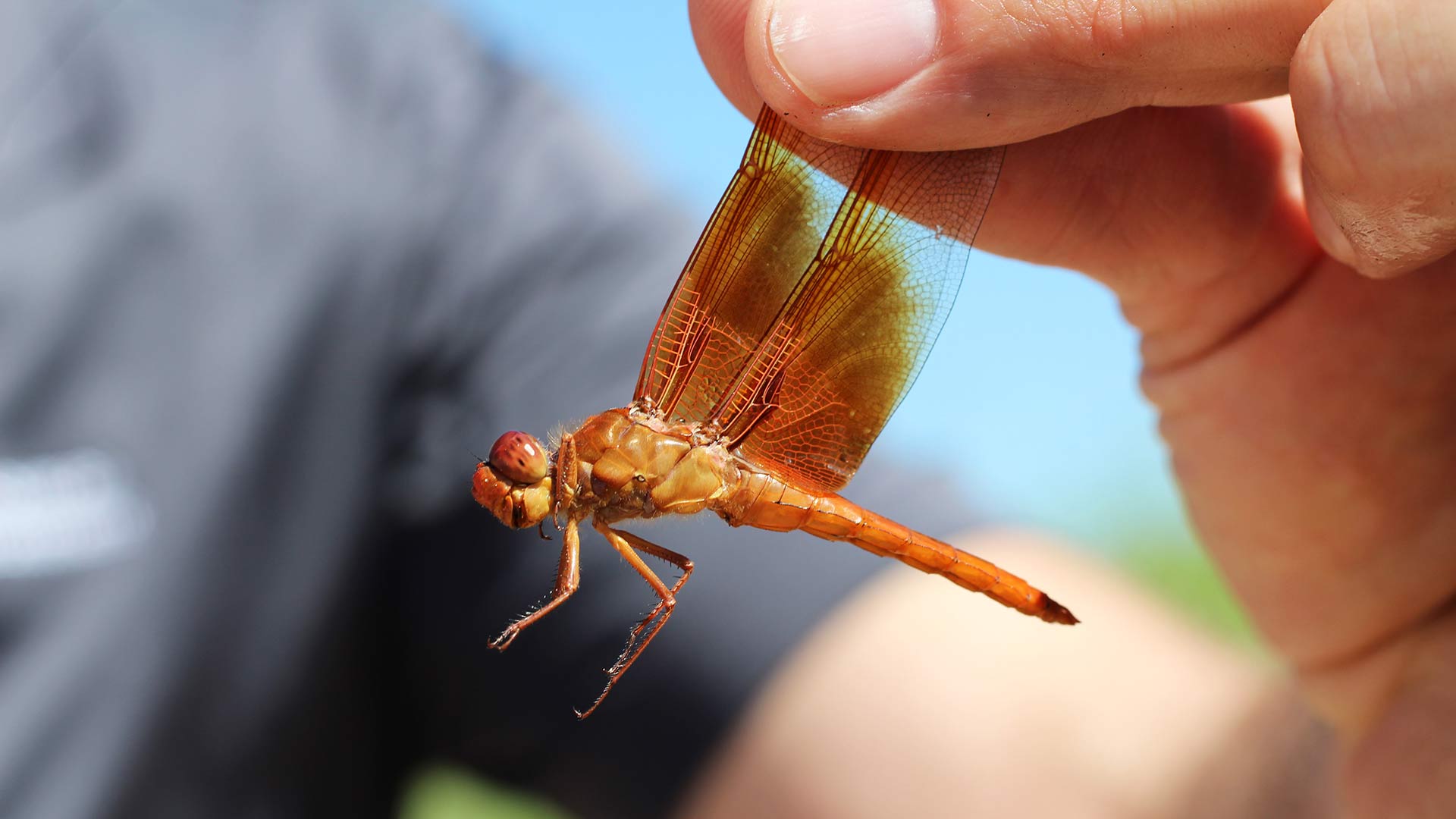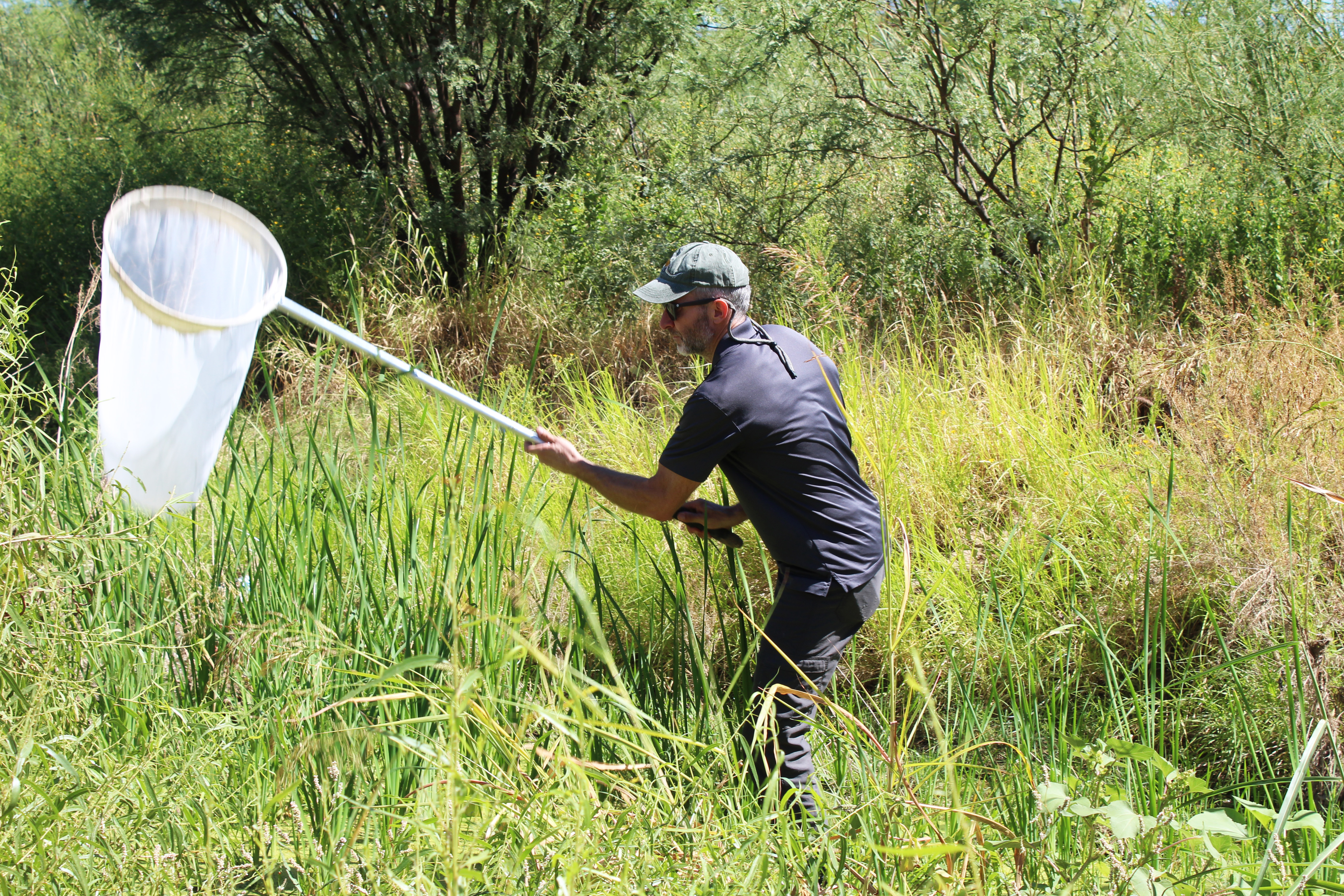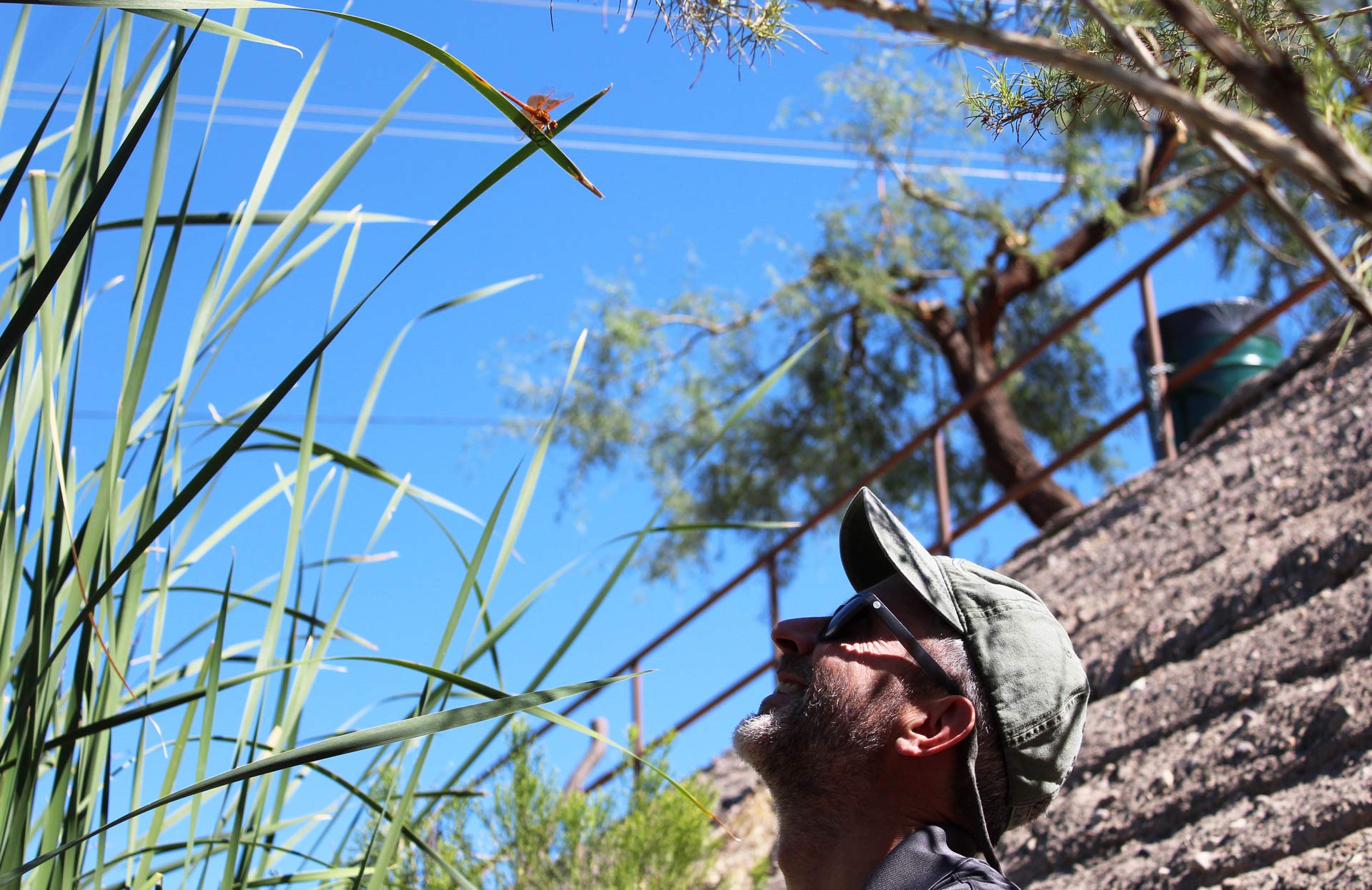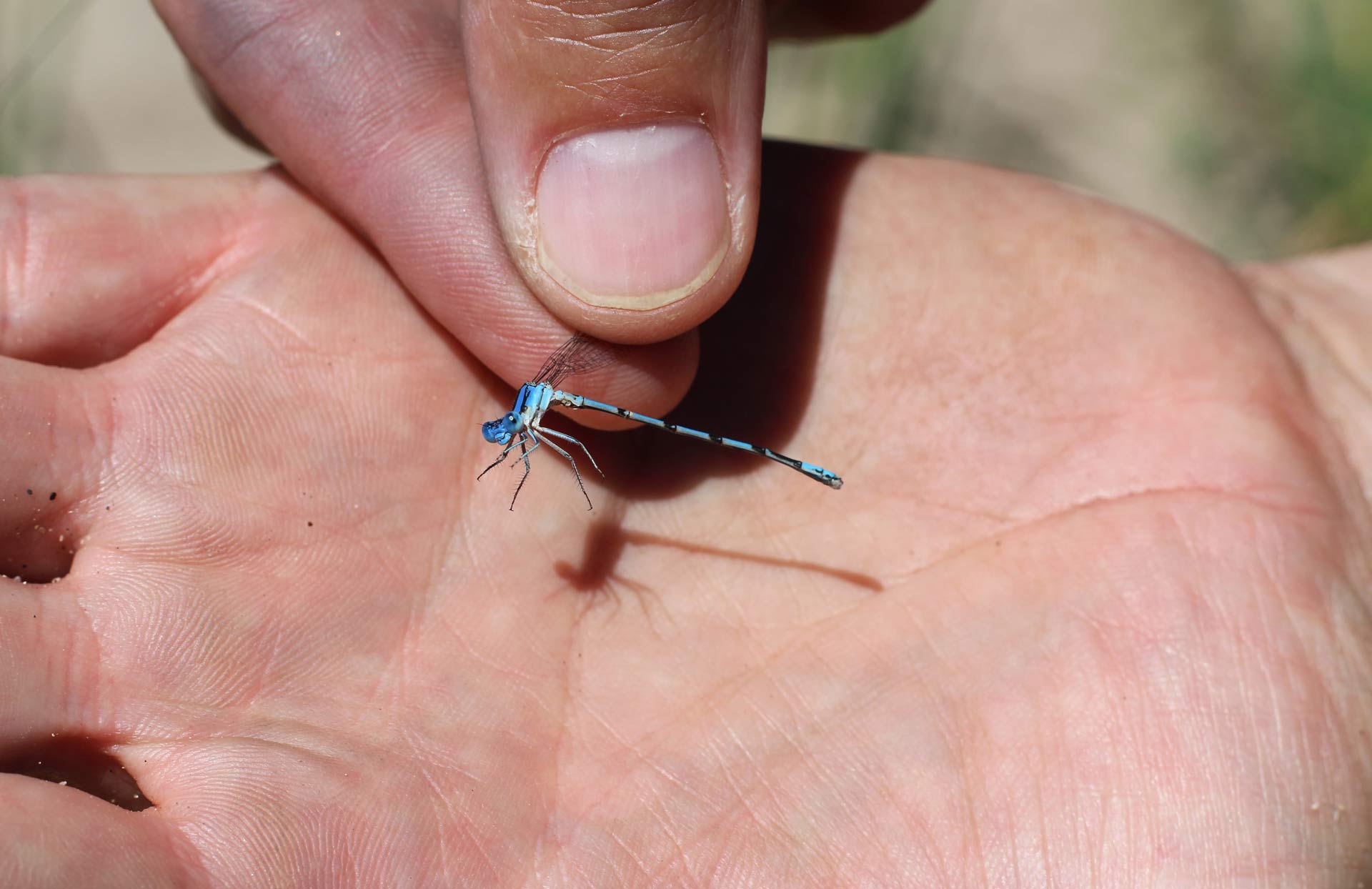 Michael Bogan, UA aquatic ecology professor holds up a Mexican amberwing dragonfly at the Santa Cruz River Heritage Project Reach in Tucson, Ariz., on Friday, Sept. 20.
Michael Bogan, UA aquatic ecology professor holds up a Mexican amberwing dragonfly at the Santa Cruz River Heritage Project Reach in Tucson, Ariz., on Friday, Sept. 20.
Tucked behind a vacant dirt lot, houses, and urban ranches in Menlo Park, a quiet neighborhood in downtown Tucson, lies the Heritage Project Reach of the Santa Cruz River.
The site is where treated wastewater flows through an outfall, or concrete pipe into the riverbed.
Since 2019, Tucson Water has released approiximately three million gallons of highly treated wastewater from Pima County’s Agua Nueva Water Reclamation Facility. The release has supported the growth of aquatic wildlife including the endangered Gila topminnow, American bullfrogs, over 65 species of dragonflies as well as riparian vegetation such as cattails and duckweed all while replenishing the aquifer beneath the surface.
“It’s been what we call a passive ecological restoration project, said Michael Bogan, professor of aquatic ecology at the University of Arizona.
Once the city put water back into the river, researchers observed what happened, and which species came back.
 VIEW LARGER Michael Bogan, UA aquatic ecology professor catching dragonflies at the Santa Cruz River Heritage Project Reach in Tucson, Ariz., on Friday, Sept. 20.
VIEW LARGER Michael Bogan, UA aquatic ecology professor catching dragonflies at the Santa Cruz River Heritage Project Reach in Tucson, Ariz., on Friday, Sept. 20. “The dragonflies, the wetland plants we’re looking at, all this vegetation, this marsh, those are all things that either flew in and found the new habitat or the seeds blew in and started growing here because there was water,” Bogan said.
Bogan notes that dragonfly recovery has ramped up along the Santa Cruz River, especially in places like North Tucson and Marana.
This success inspired him to reach out to the Sonoran Institute with the idea of celebrating these insects.
“I had read about dragonfly festivals in Japan and I had seen a dragonfly festival or dragonfly day that happens in New Mexico and I thought, ‘Well we’ve got more species than either of those places, so why don’t we have a festival?’” Bogan said.
What started as a one day event in 2019 has now evolved into a month-long celebration of a restored ecosystem.
 VIEW LARGER A Mexican amberwing dragonfly sits on wetland grass and eats while Michael Bogan, UA aquatic ecology professor watches on Friday, Sept. 20, in Tucson, Ariz.
VIEW LARGER A Mexican amberwing dragonfly sits on wetland grass and eats while Michael Bogan, UA aquatic ecology professor watches on Friday, Sept. 20, in Tucson, Ariz. “It’s become a part of the dialogue here in southern Arizona, that dragonflies are part of the natural heritage here and they represent the curiosity, the beauty, the diversity that is the Santa Cruz River and the population that lives in and around it,” said Luke Cole, director of the Santa Cruz River Program at the Sonoran Institute.
This September, the conservation non-profit organization and its partners are celebrating the 6th annual Dragonfly Festival.
The river is home to 65 known species of dragonflies and damselflies along the river– about half of what’s known in the entire state of Arizona.
Of these, about eight or nine are migratory, just passing through without establishing breeding populations.
According to Bogan, some dragonflies are even known to hitch rides on hurricanes, getting swept far from their usual habitats.
 VIEW LARGER An Aztec Dancer damselfly at the Santa Cruz River Heritage Project Reach in Tucson, Ariz., on Friday, Sept. 20.
VIEW LARGER An Aztec Dancer damselfly at the Santa Cruz River Heritage Project Reach in Tucson, Ariz., on Friday, Sept. 20. “About this time of year, we also will see some tropical dragonflies that get pushed out of Sonora up into the US because of these hurricane storms,” Bogan said.
While ecologists can find it challenging to convey the importance of a certain species to the public, Bogan finds it easy when it comes to dragonflies.
“Dragonflies do things for humans their entire life,” Bogan said. “The larvae are eating things like mosquito larvae under water and then when the adults are flying around, they’re also eating mosquitos, gnats, [and] other annoying insects.”
In addition to providing food for fish, turtles and birds, their vibrant colors and beauty capture people’s imaginations.
Tomorrow, as part of the month-long Dragonfly Festival, Bogan and other local experts will be leading guided tours along the Santa Cruz River to showcase the remarkable insects and celebrate their impact on the ecosystem.

By submitting your comments, you hereby give AZPM the right to post your comments and potentially use them in any other form of media operated by this institution.